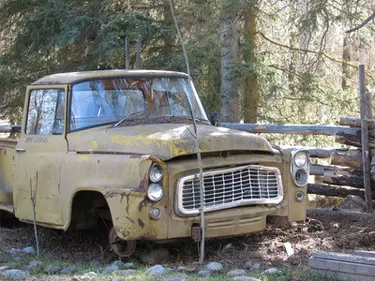
Depreciation is the term used to explain the loss of value of certain products or goods. It is mostly an accounting term and it is reflected in company, business or personal financial income statements as an expense. The concept of depreciation is explained by the use that is given to the product over the years, that is, measuring the loss in value of an asset or property over specific periods of time until it has completely lost all value.
Capital Cost Allowance
Video of the Day
The main purpose of depreciation is its use in itemizing income tax deductions. A Canadian citizen (or company) cannot deduct from his taxes the whole cost of a property that is used to earn income, but he can deduct a percentage of the property's cost: he can deduct the depreciated value of that property. The Capital Cost Allowance (CCA) is the tax term for depreciation, and it is the only allowable depreciation expense. It is the term used for the part of the cost of the property that can be deducted from the income taxes according to Canadian laws. The amount you can deduct gradually increases over time, decreasing the value of the assets of the company or individual. The CCA that can be claimed depends of the properties owned and the time of purchase.
Video of the Day
Properties for Depreciation
The Canadian Costs and Revenue Agency (CCRA) defines which properties are depreciates and divides them into 15 different classes according to rates (tax rate) of CCA and usage. Some of the most important and common properties are buildings, computer hardware, motor vehicles, automobiles and passenger vehicles, leasehold interest, patents, franchises, concessions and licenses with time limitations, taxis, roads, and data network infrastructure equipment.
Most Common Classes
The first most common class is Class Eight, which includes musical instruments. Its CCA rate is of 20 percent. Class 10 includes motor vehicles, some passenger vehicles and automobiles. The CCA rate for this class is 30 percent. (Passenger vehicles from some years fall under subclass 10.1.)
Tax Depreciation Methods
There are two types of methods to calculate tax depreciation. The straight line method is used for patents, franchises and licenses. The declining balance method is used for most assets. Its declining balance rate is specified in the different classes (the tax rate). There are some rules defined by the CCRA in the moment of calculating the deduction by depreciation. First the asset must be available for use before the allowance for deduction of CCA, and second, for newly purchased assets, only 50 percent of the cost may be used for CCA calculation.
Additional Rules
It is not necessary to claim the maximum amount of CCA for the year. Any value between zero and the maximum established for the year can be claimed. CCA can not be claimed for lands or living things. In partnership, the CCA of properties owned by the partnership can not be claimed personally by any of the partners. The slips that are filled out to claim the tax deduction will show the amount of CCA the partnership claimed on behalf of one partner.